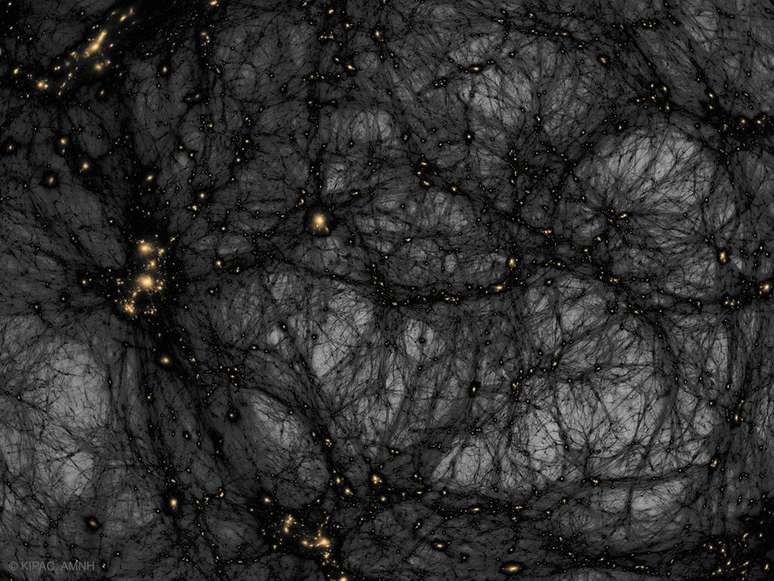Researchers suggest that the Earth is immersed in an ocean of dark matter, whose waves in the ionosphere would help us detect this mysterious substance
Detecting mysterious dark matter could be easier than we thought. According to a new study, it is possible that our planet is immersed in an ocean of dark matter, whose waves would reach the atmosphere superior terrestrial. The impact could generate detectable radio waves, which would allow scientists to finally find this intriguing component of the universe.
Say that the dark matter represents an unknown and is not an exaggeration. Everything we can see in the universe is made of matter defined as any substance that has mass and takes up space. This also applies to dark matter: the difference is that it does not reflect, absorb or radiate light, hence its name.
Although scientists estimate that about 27% of the universe is made up of dark matter, it is not yet known exactly what it is. One possibility is that it is light and exists as axions (a type of theoretical particle), or as some exotic type of photon which has a small mass.
If we consider that dark matter is millions of times lighter than the lightest known particles, then it could have very strange behaviors, such as waves. This is where the new study comes in, in which the researchers explored models of ultralight and not completely dark dark matter.

In the study, these particles interacted with ordinary matter; in most cases, the interactions went unnoticed and did not generate anything detectable. However, in some more unusual cases, the interaction between dark and normal matter has produced radio waves.
For this to happen, the dark matter must meet the plasma waves, and the frequency of both must be aligned. Models have shown that this is how resonance occurs, expanding the interaction and producing radiation in the form of radio waves.
Although plasma is quite common in the universe, the authors chose to work with the ionosphere. This is the heated layer of our planet’s upper atmosphere composed of ionized particles, which form plasma. The ionosphere has its own waves, which could interact with the (hypothetical, it is worth remembering) ripples in dark matter.
Contact between the two should generate almost imperceptible radio waves. To detect them, the authors recommend using carefully tuned radio antennas to search for a certain wave frequency over the course of a year. However, this form of dark matter is quite theoretical for now, and it could take years before the waves are found and observed if they actually exist.
The article with the results of the study has been published in the repository arXivwithout peer review.
Source: arXiv, LiveScience
Trends on Canaltech:
- The patient uses a clear plastic implant that exposes his brain
- 8 AI to create animations
- Which iPhones will receive Apple Intelligence?
- It just doesn’t do the same thing: 7 things iOS 18 copied from Android
- ViewSonic LS740HD Review | Professional projector with great brightness
- Donna undergoes a fecal transplant and “gets” her boyfriend’s depression
Source: Terra
Rose James is a Gossipify movie and series reviewer known for her in-depth analysis and unique perspective on the latest releases. With a background in film studies, she provides engaging and informative reviews, and keeps readers up to date with industry trends and emerging talents.





-t4ncqljsx55w.jpg)

